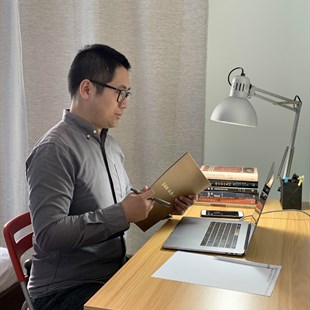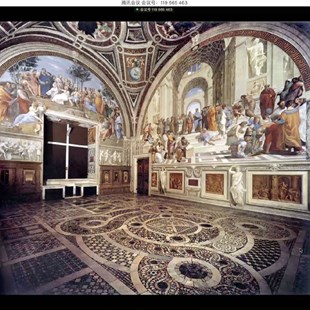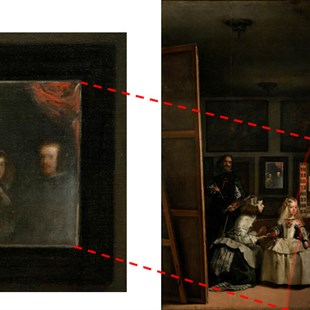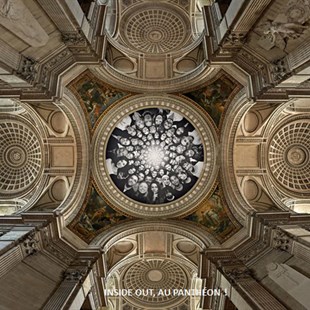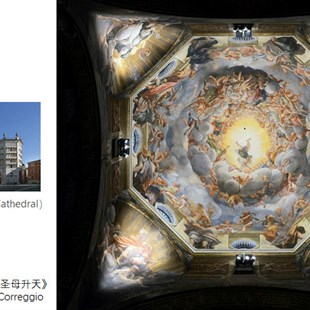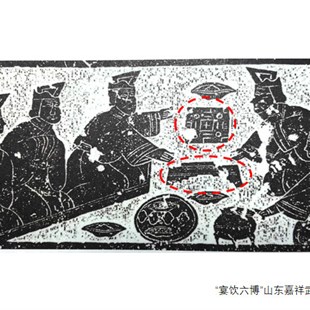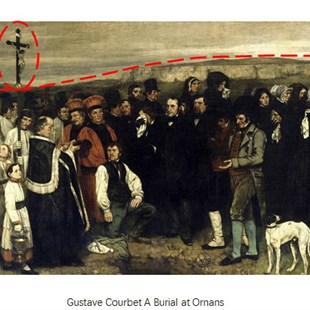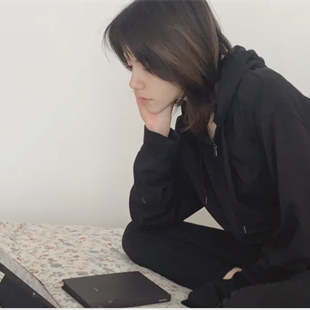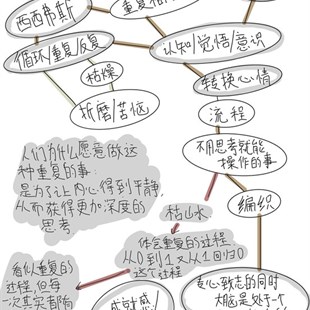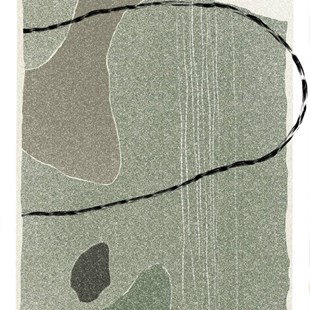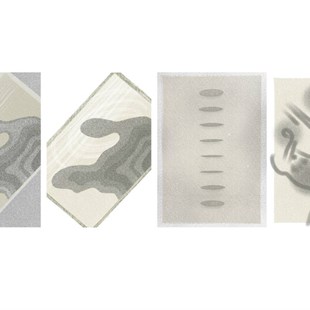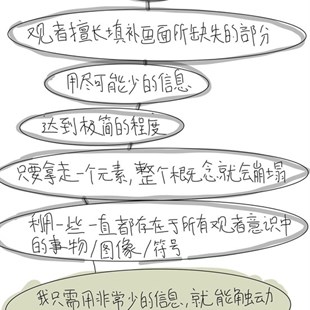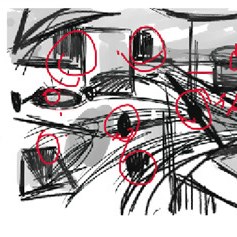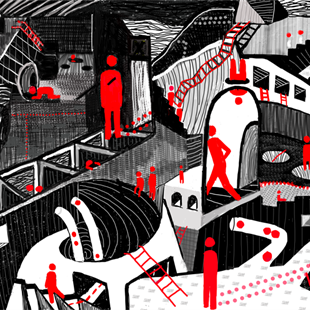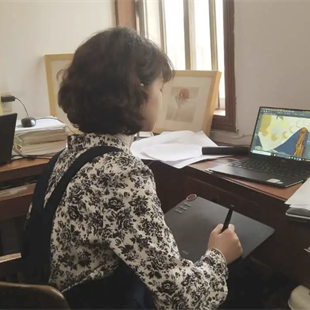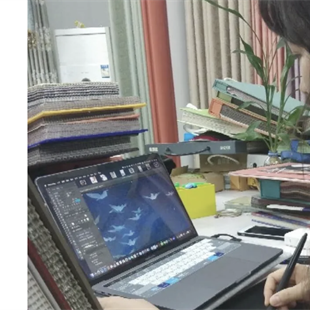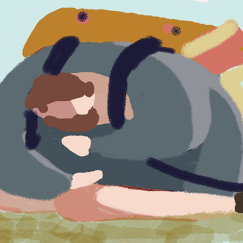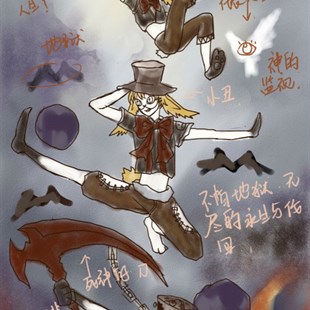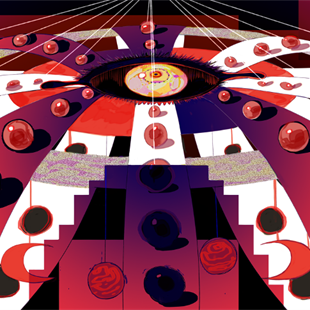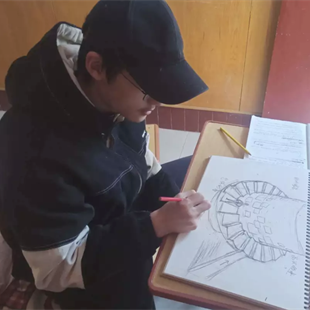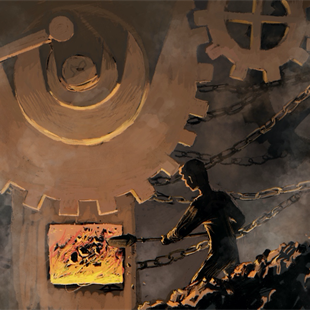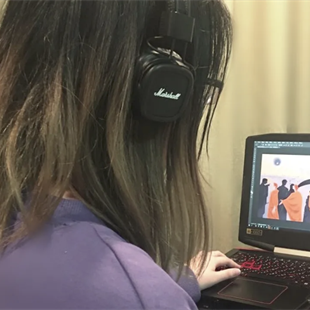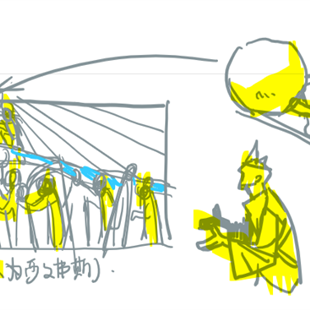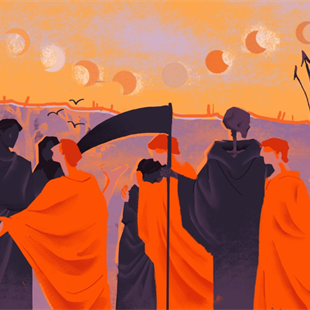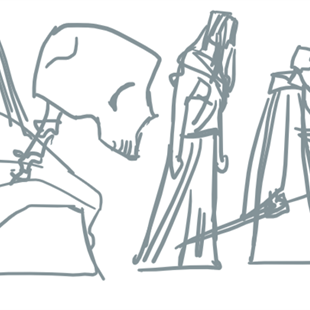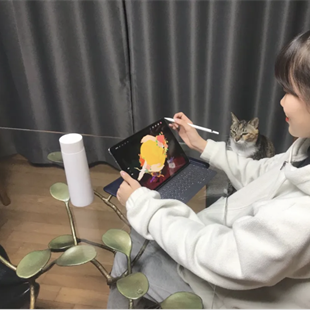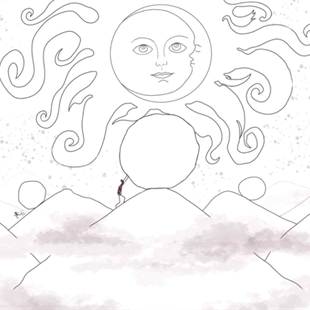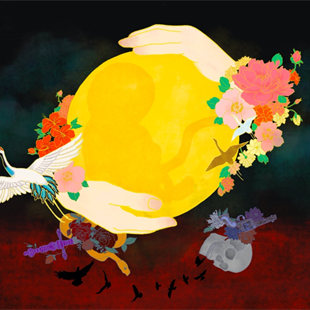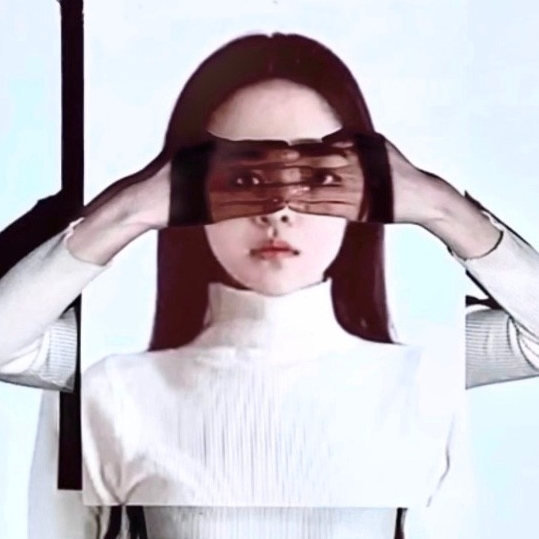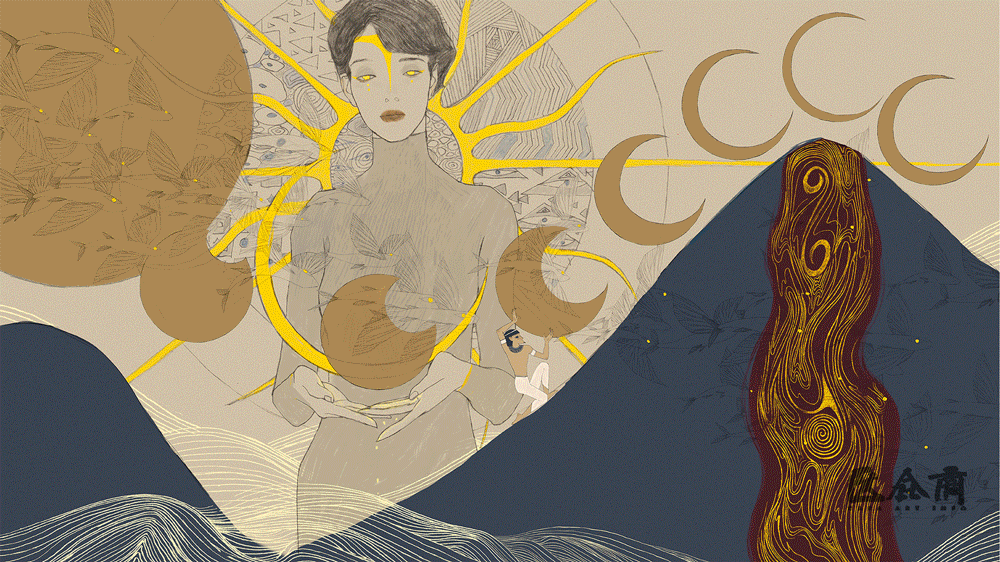
Editor’s Note: The pandemic aroused by COVID-19 has changed the modes of production, transportation and life style of the entire society, which also directly affects the teaching methods between teachers and students in schools. Following two inspiring online classes from Printmaking Department and Department of Oil Painting which have aroused much attention and discussion, there was even a netizen who commented that “what a unique enrollment guidebook from CAFA.” From a realistic perspective, this series is intended to encourage viewers to find the significant value that “various teachers and students might bring about in online classes.” Indeed, there are no walls for good universities and excellent courses.
While directly hitting the online classes, the significance behind them is undoubtedly rich: will online teaching bring new opportunities or challenges to art education? How should an art academy conduct online classes? How should art courses that emphasize technical training and face-to-face communications adapt to this new situation? What impact will it have on the traditional education model?
In this session, the course entitled “Digital Mural Painting” led by Zhang Hanpu with junior undergraduates will be introduced. The Mural itself is a media-focused discipline. “Digital mural” is constantly updated with technologies, so what are the distinctive features in this era of online teaching? What difference will the change of teaching mode bring? How can teachers switch roles and become “persons who build knowledge frameworks for students”? Let’s find the answers together!
Online Teaching Notes
Based on the Interview with Zhang Hanpu

Zhang Hanpu was giving online lecture and communicating with students
There are mainly two types of traditional art education: the collective lecture form and specific one-to-one instruction, and they are common methods in general university education. However, for art education, this one-to-one instruction should be based on thinking and communication, with more emphasis on specific practice. Sometimes, if the language is not easy to express, one action or one exemplary operation can make a student instantly understand. I think this is difficult to substitute with online courses, because this kind of operation is aimed at individuals and will only take effect in specific scenarios. Sometimes a teacher helps you to adjust a tone and wipe a stroke, or to draw a root line, maybe you can understand how to draw it in one click. For such operations, it is difficult to achieve the desired effect across the screen.
The advantage of online teaching is equality. On the one hand, on the network, everyone has the same small window frame, which has a certain psychological impact. Without the formal framework of classrooms and podiums, a teacher is more like a worker who simply provides knowledge services during lectures and the boundary between teachers and students is eliminated; on the other hand, the network is an open space, facing the existing similar knowledge resources from the network, I will give more consideration to the rigor and value of my knowledge. The specific operations and technical details can be easily obtained through an online search. Though I actually want to teach the way of thinking and learning methods. At this moment, my identity is no longer as a teacher in the traditional sense, but an experience sharer. In the internet age, the function of carrying knowledge has been given to search engines and various online resources. “Book knowledge” will be available online in the future, so I think the focus of teachers' lectures will change accordingly.
A few years ago, a young man who recorded a teaching mathematics video for his sister, put his video on Khan Academy and shared it on the internet. Because his teaching of mathematics principles was very simple and intuitive, mathematics teachers in many schools around the world are now showing Khan Academy videos directly to students in a class. This may become a trend in the future. Most teachers will change from a lecturer who explains specific knowledge to a leader who builds a knowledge framework for students. If future schools transform in this direction, I think it is gratifying. Thanks to the internet, teachers can withdraw from repetitive explanations and further think about some uncertain issues and share the thinking process with students.
The communication efficiency of online teaching is actually similar to being offline. My computer class is quite special. It is the same as the number of students in the previous offline class. The number of students can only guarantee that I can do simple communication with everyone. There is no way for me to provide very detailed and specific counseling for each of them. If anyone has any questions after class, they can contact me again. There is no way to conduct in-depth discussions during class time. I think the question worth rethinking is how to learn in the internet age. According to the characteristics of the internet era, art education should make corresponding adjustments, make full use of network resources and encourage students to learn independently. Starting from finding problems, they will gradually find solutions through practices. From the perspective of an educator, I am thinking of how to help students establish a set of learning methods and guide them to complete the entire learning process by themselves, rather than serving as a means of conveying knowledge and putting ready knowledge into students' minds.
This form of online teaching has already had a lot of practices in many fields and there are many excellent courses. Traditional art education should also accept this new form of education with an open attitude. Not only from the perspective of current art education, but it should also be from the perspective of history. Art education itself also has a historical development process, from the model of workshop apprenticeship to the formation of the Western art education system, to the academic teaching brought by Mr. Xu Beihong from France. In fact, it is a historical development process and it is the product of epochal developments.
Contemporary art creation requires more comprehensive qualities of artists, which requires our art education to adjust accordingly. Online teaching has left the campus space and at the same time, it has brought the vision of learning to the front of the entire social education market. The “ivory tower” is being dispelled by this online teaching practice. In the future, all teachers’ classes will be measured by the entire social evaluation system. This pressure may be felt by each teacher participating in online teaching. This is the impact of online teaching as challenges and opportunities coexist.
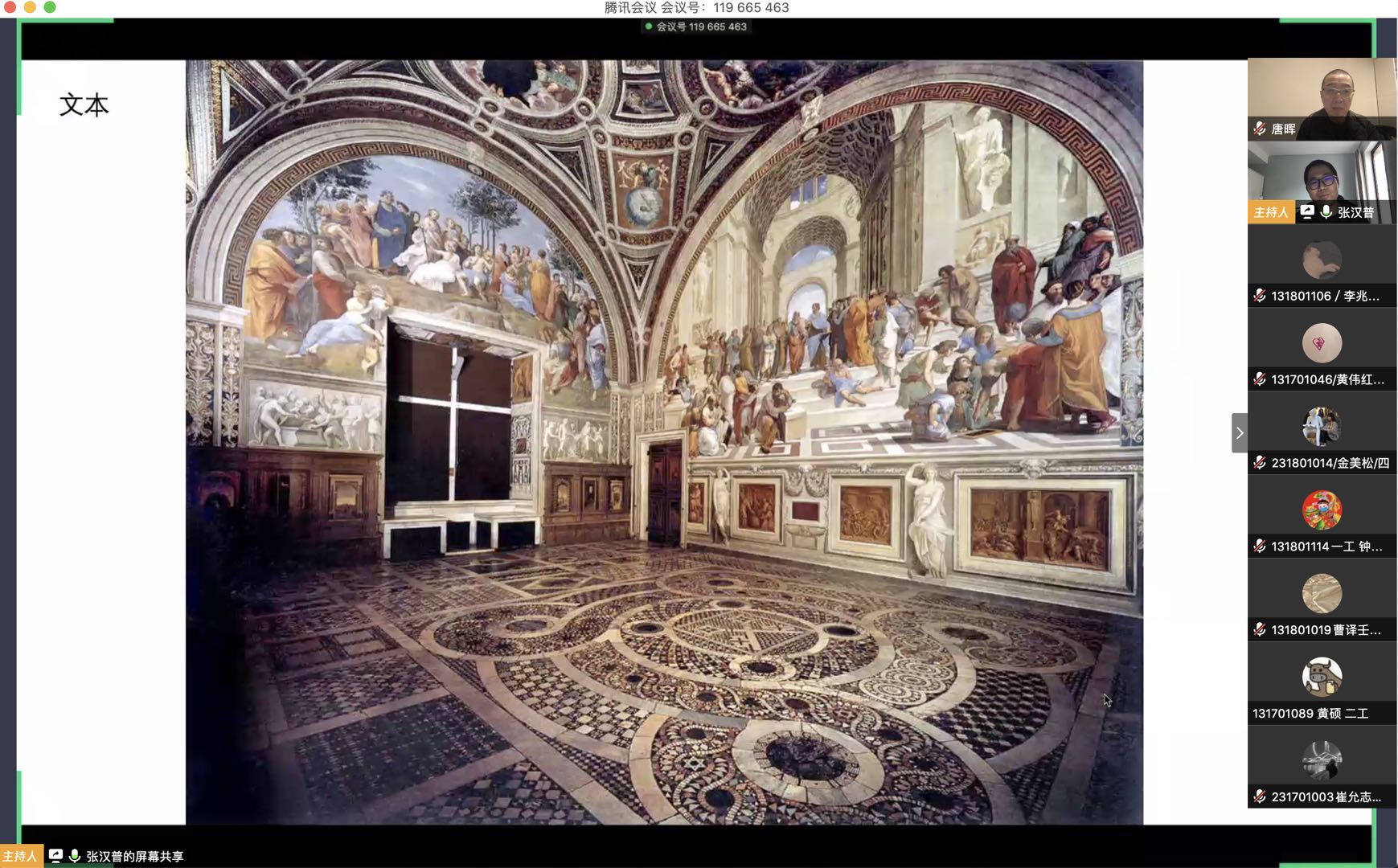

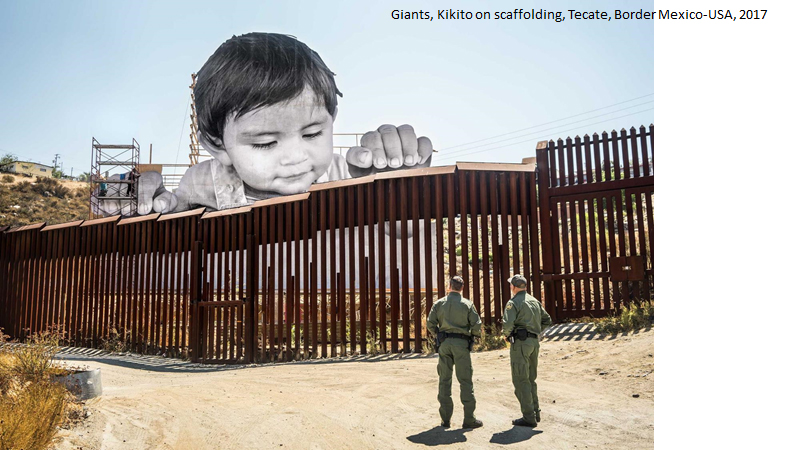
Screenshot of Course "Digital Mural Painting"
Online Class Introduction
Digital Mural Painting, Mural Department
Teaching methods and requirements:
In terms of mastering softwares: students should have a basic understanding of computer painting softwares (Photoshop, Procreate) and achieve a relatively complete computer painting creation through practical operation and proposition creation.
In terms of creative thinking: through the grasp of basic common sense in related fields (such as philosophy and psychology), the lecturer analyzes the brain’s understanding and cognitive mechanism between images and words, explores the connection between logical thinking and thinking on images, and further combines case studies and lectures on specific works of art, thus opens new ideas for students to think about creative issues.
Course Plan:
Every Tuesday and Thursday from 9:30 to 11:30 in the morning using Tencent Meeting software for online concentrated lectures, the students are divided into 8 groups according to the studio and grade, the group counseling time is every Friday, specific time will be arranged through contact with each group leader. Assignment requirements: Timely submission after class and they will be graded.
Introduction to Zhang Hanpu
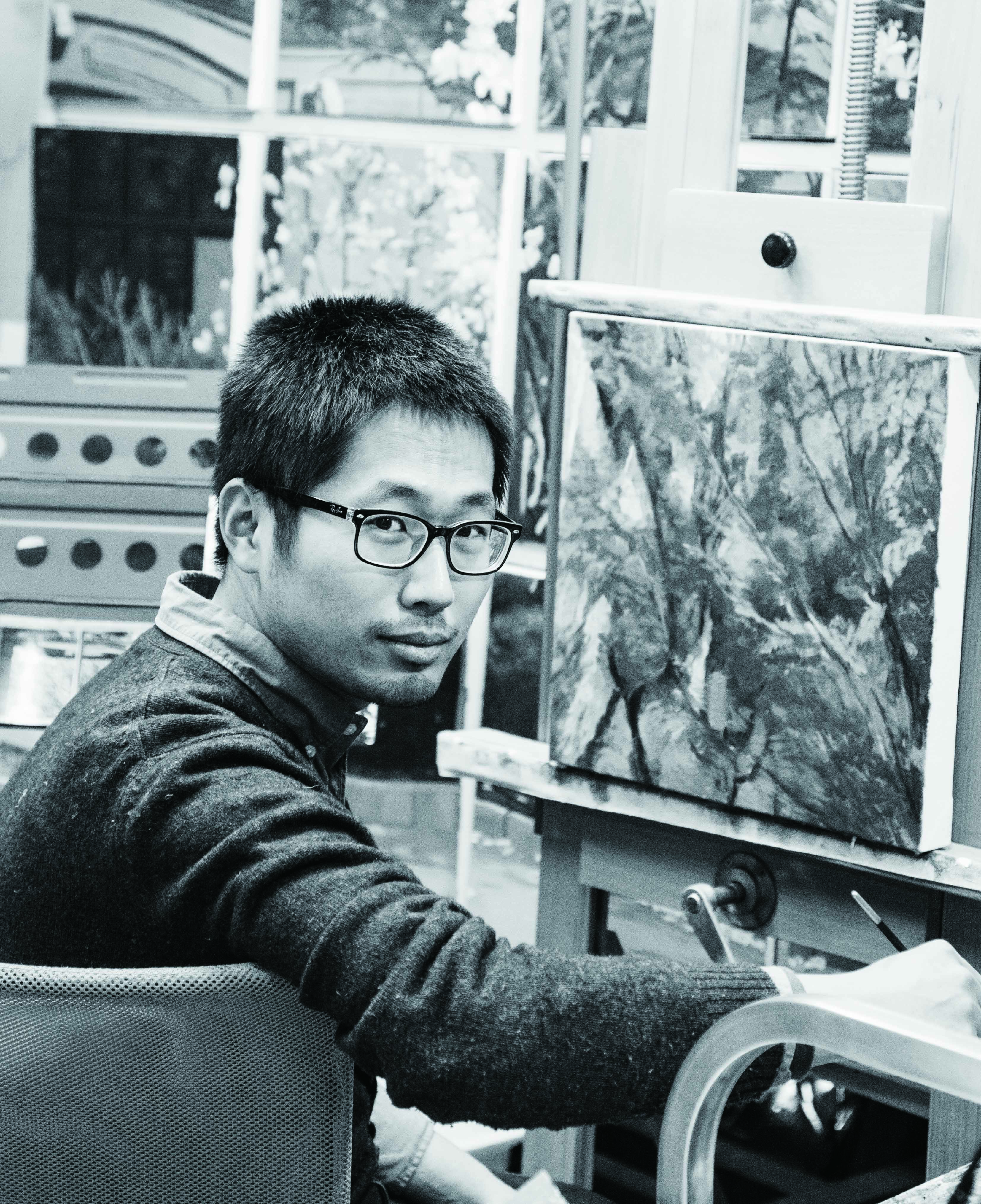
Zhang Hanpu graduated from the Mural Department of the Central Academy of Fine Arts in 2017 and has taught in the Material Studio of the Mural Department, the Central Academy of Fine Arts since then. He has participated in many design works including the fifth set of RMB optimized design, the murals of the Vietnam-China Friendship Palace, the 70th anniversary of the establishment of the Inner Mongolia Autonomous Region, and the murals of the Zhongshan Memorial Library.
Coursework:
Create a mural based on The Myth of Sisyphus (decide the topic by yourself)
Requirements:
1. The design description elaborates the thinking process of creation
2. Submit electronic files (layered in psd format)
3. Composition size ratio 16: 9, recommended format 80 / 45cm 300 dpi
Regarding the form of online teaching, I made some adjustments to the “Digital Painting Course” that previously focused on the teaching of technologies, so I had this “Digital Mural Painting” course. This course is one of the basic courses from the Mural Department. It is aimed at all undergraduate students of the Mural Department in the second and third grades, with a total of 67 students.
The preparation of this online course started during the holidays. After testing, I chose the APP of Tencent Meeting. This method made me feel that it was more “orderly” than the offline teaching, the transmission of information mainly depends on the content of ppt and communication. One-on-one conversations must be done in full view, otherwise network noise and microphone echo will prevent all participants from receiving valid information. Because of the number of students, each tutoring process lasts for a whole day, so students can only be grouped and group tutoring can be used to listen freely.
Mural painting is a major that pays more attention to material media. Digital painting has also been included in the material category in teaching. Considering digital software as a material to realize creative ideas is a thinking perspective. It can be said to be very young as a medium, appearing later than any other painting material. As a medium for painting, the problem facing the teaching of this material may be that the updated speed is too fast, including software and hardware.
Focusing on the era of the internet we are in, this is an era that focuses on content creation. For the characteristics and practice of mural creation, I have listed “how to use the advantages of digital software painting to deepen content creation” as the core of this digital mural painting class. Digital painting softwares on various hardware platforms can already simulate the effects of various traditional painting materials. This brings us to the question “if digital painting is used as a medium, what are its material properties? Is it an imitation of traditional painting materials? Or is there something else?” I hope that through this course and subsequent practices, students might have more in-depth thinking on this issue. I hope that this course will provide some help for their future artistic creation and career choice.
The internet is an existence that connects and includes everyone. There are many voices on the network and there is a lot of noise occupying the resources of social attention. Many online art education and live painting courses have been launched on many platforms. With this background: on the one hand, the art education of the colleges in the internet era should be more open. I used to talk about the “ivory tower” when talking about the art creation in academies. I think it will be rarely mentioned in the future. The future is not dependent on specific spacial constraints. The internet spreads knowledge to the public at a very low cost. Art schools should also share knowledge in a more open manner and become an important node for spreading knowledge.
On the other hand, the school’s art education should give full play to its own advantages. The reputation and historical accumulation of Central Academy of Fine Arts, the systematic and teaching resources of the disciplines, should be organized and excavated more systematically to provide more excellent art education services to the whole society. This process of organizing and integrating the academy’s own resources can also explore new possibilities for the development of art education.
Courtesy of Zhang Hanpu and His Students, edited by Zhang Yizhi
Translated and edited by Sue/CAFA ART INFO


